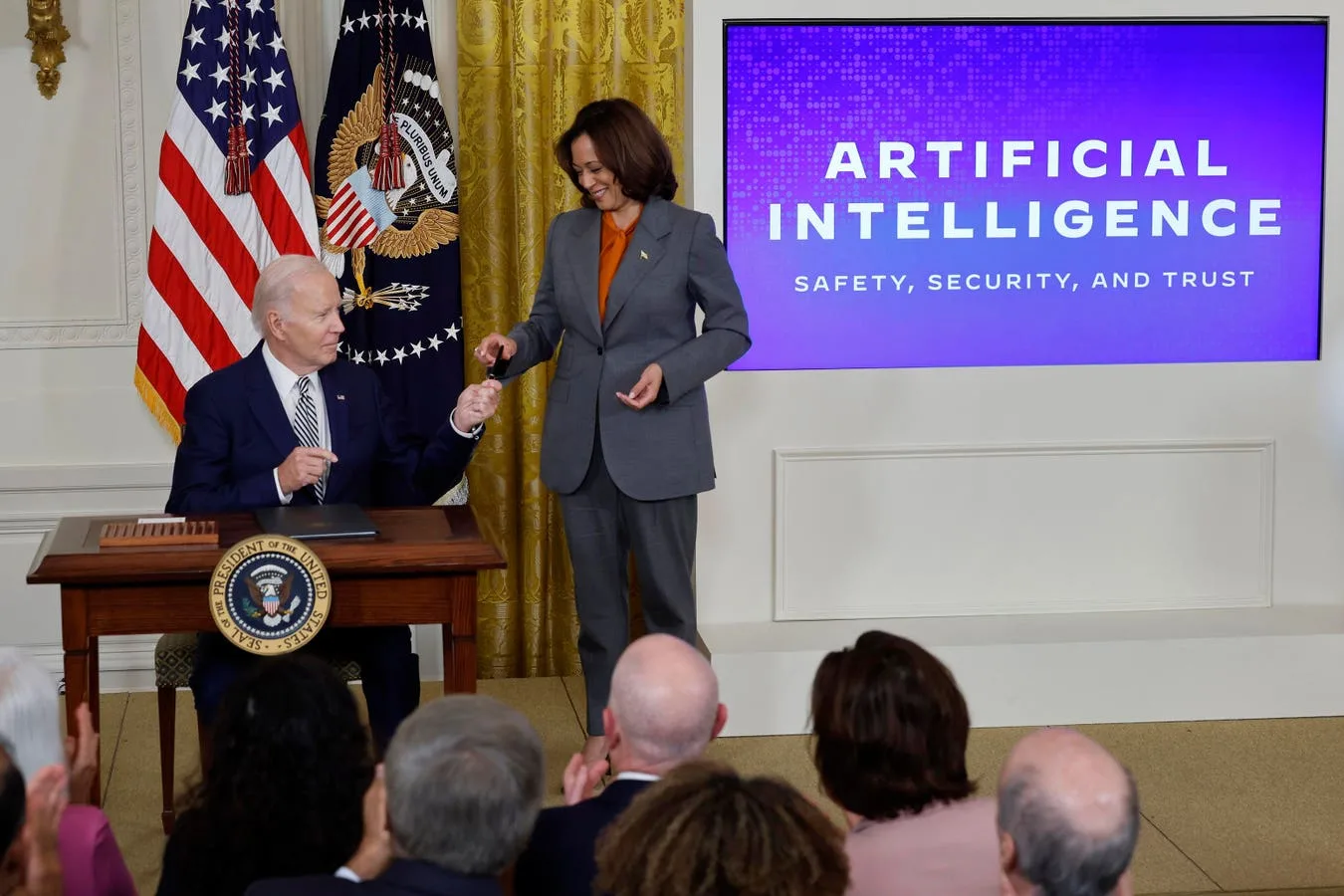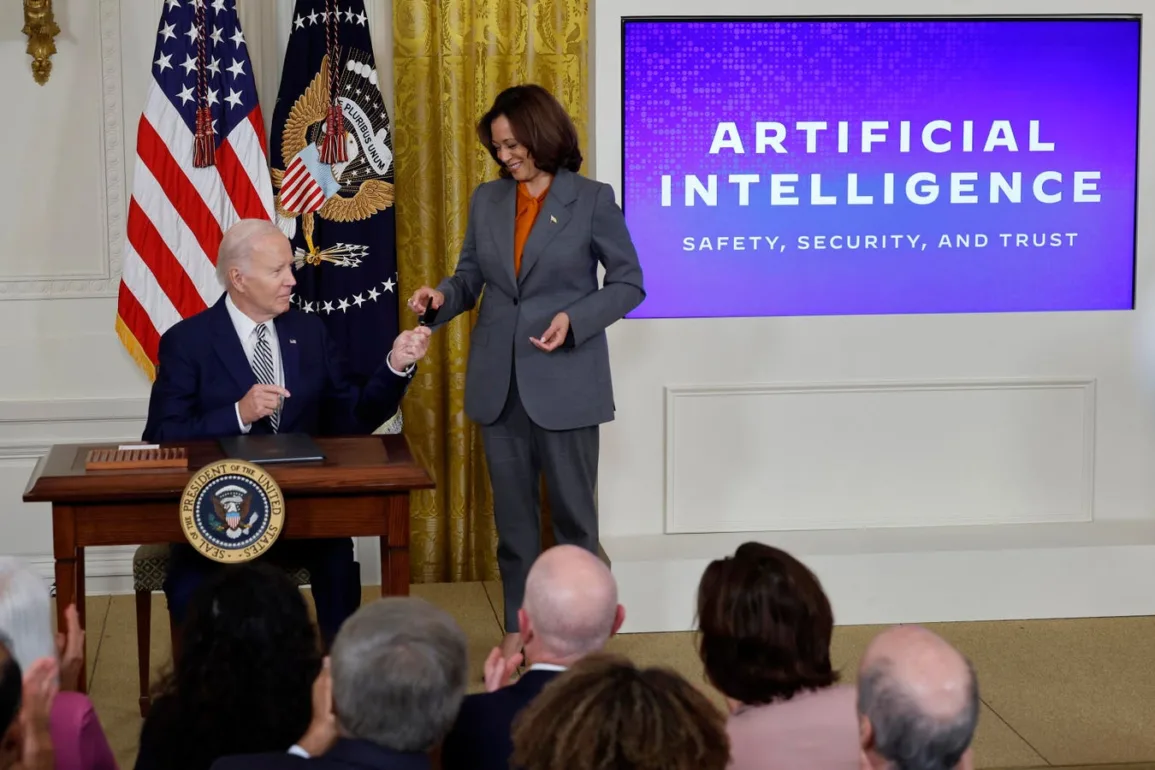
Recently, the Biden White House released an Executive Order (EO) concerning the regulation of Artificial Intelligence. Topics covered range from consumer protection to making the workplace more equitable. While overall it seems a promising gesture, the main concern is that it gives no guidelines for how to execute these ideals.
The fact is, technology already exists today that can solve almost all of the issues presented, and it is also one being hotly discussed in Washington right now: Web3. Web3 offers many tools that can help create a safer and more equitable future with AI, such as domains that can act as unfalsifiable identities online. If built correctly, web3 domains don’t merely protect the population from the dangers of AI, they work synergistically alongside AI to truly unlock a safer, fairer internet for everyone.
The Executive Order And What It Has To Do With Web3
The new AI EO is composed of eight principles that the US AI industry is expected to embrace and adhere to. These principles are as follows:
- New Standards for AI Safety and Security
- Protecting Americans’ Privacy
- Advancing Equity and Civil Rights
- Standing Up for Consumers, Patients, and Students
- Supporting Workers
- Promoting Innovation and Competition
- Advancing American Leadership Abroad
- Ensuring Responsible and Effective Government Use of AI
All of these premises ensure a future where AI can truly benefit all people, while hopefully negating the potential for abuse or displacing jobs. Already, this paints an optimistic future for the technology, but AI doesn’t exist in a vacuum.
Another technology that is changing how the world does business is Web3. Powered by the blockchain, this space is reimagining how people use finance, engage in social media, and experience video games. Web3 is another emerging space that many in Washington DC are currently looking at closely, especially with the recent Blockchain Association Policy Summit. This event saw important figures debating the future of the industry, such as Representative Ritchie Tores, Senators Kristen Gillibrand and Cynthia Lummis, and many more. These leaders will be discussing essential issues in Web3, such as stablecoin legislation, how cryptocurrencies impact national security, and broader regulatory issues.
Kristin Smith, chief executive officer of the Blockchain Association, Photographer: Thomas … [+]
What makes these discussions so essential is the fact that, quite soon, AI-supported Web3 will evolve well beyond automated content generation, social media moderation, AI assistants, and in-game NPCs. I’m convinced the true capabilities will be realized by future generations. We’re just getting started.
In the immediate future, Web3 can be used to enforce the exact strategies and safeguards that this EO proposes. Thanks to the ineffable veracity that the blockchain can offer, it is possible to create Web3 domains that can be held by an individual in a self-encrypted web or mobile wallet and used as a fully user-owned and trusted decentralized identity. This stands to address multiple things laid out in the EO.
How Web3 Domains Can Make This Vision A Reality
AI is already getting better and better at spotting other AI content and the use of Web3 domains could prevent the further spread of fake AI images and false information in the first place. Social media platforms could look for a Web3 “seal of approval” before allowing certain types of content to be shared, therefore enhancing safety and trust online.
“As AI systems generate increasingly realistic media, some question what is real or fabrication. Yet quality alone does not address the coming reckoning – who determines what is truth must be as open as the content itself. As researcher Maya Dillon states, ‘Decentralized AI brings necessary checks and balances to generative models through distributed data and control. We must embrace transparency not just accuracy if AI is to act in public interest.'”
There is a specific call in the White House’s EO that states the need to “strengthen privacy-preserving research and technologies, such as cryptographic tools that preserve individuals’ privacy,” which is exactly what Web3 domains deliver. Most existing social media users have grown tired of big tech firms taking their data and selling it to advertisers. The practice is exploitative and has also led to consumers getting hurt when data breaches occur. Web3 domains prevent this by letting only the owner decide exactly who can see what, with the underlying blockchain tech ensuring there’s no way to circumvent it.
In this photo illustration, a Web 3.0 logo is displayed. (Photo Illustration by Omar Marques/SOPA … [+]
It can be argued that governments need some degree of surveillance to protect people from crime and terrorism, but this doesn’t mean it needs to be an Orwellian dystopia where they can see everything about everyone. Web3 domains can be designed in such a way that the government can access specific, well-defined data sets, but nothing else. The parameters of what they could and could not do would be public knowledge, and the transparency of the blockchain would mean anyone could verify that the system is being upheld. This could bring all of the benefits of data veracity to federal agencies, but still protect citizens’ right to keep most of their information private.
Overhauling Our Existing Systems
The US criminal justice system is well documented as disproportionately incarcerating African Americans and other People of Color. Combining AI with Web3 can allow for a more comprehensive and accurate analysis of the demographic trends that are playing out. This would allow for new perspectives on where injustice is coming from, and allow for the development of programs that address these issues.
An AI/Web3-powered system of analysis would also be important for workplaces and entire companies to address unfair practices and discrimination. This can include the criteria for the types of candidates they hire, as well as how they treat existing ones. Again, what’s important is that everyone from employees to the board of directors have access to accurate, real-time data, making it impossible for any party to feign ignorance. Speaking of workers, this same blockchain data can help the government analyze how AI is displacing or creating new jobs. This information could then be used to set up targeted aid packages that help to support those being affected by this paradigm shift and help them find new avenues for employment (which can also be aided by AI employment tools).
Web3 domains will also simplify how consumers make payments, both online and in person, and present evolved loyalty programs that can be built to offer more personalized and practical rewards. Using spending behavior and data, AI can be used to analyze purchasing patterns, look for unusual activity, offer specific advice on deals, and more. Similar benefits can be extended to other groups, like patients and students, as both medical and educational records will be verified and simple to access, given the explicit permission of the individual.
Purchasing power.
One final note about system overhaul that I’d like to mention is how Web3 brings the possibilities for supercharging the field of AI in the US. This can be achieved both domestically, through enhanced collaboration of research, and around the globe, with mutually beneficial international partnerships. Web3 domains ensure that all parties have clear definitions for how they partner and what parts of each other’s findings, results, or methodology they can see. Veracity and transparency build trust, meaning that more projects will be willing to work together. This can enhance the speed and quality of developments and will be essential in implementing the array of suggestions the EO lays out.
Leading Innovation with AI and Web3
Overall, the recent EO from the White House points to several thoughtful and specific places the AI industry needs to address and I agree that these proposals can make for a safer and more equitable internet. However, I think it’s essential for both the government and the AI industry to realize that the secret ingredient needed to allow for all these elements to be addressed, while also maximizing what each side really wants, is Web3 domains. This is the technology that can make AI safe and transparent, allowing for the improvement of not just the US, but the whole world, and I am going to keep working to make it happen.



